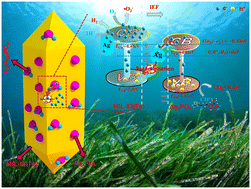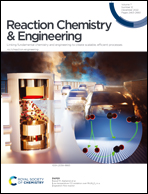Fabrication of MIL-53(Fe)/Ag3PO4 cooperative photoreduction of Ag0 particles with outstanding efficiency for photodriven H2 evolution and pollutant degradation†
Abstract
A novel heterostructure photocatalyst including photoreduction of Ag0-loaded MIL-53(Fe)/Ag3PO4 (MFAAx) composites was designed and successfully synthesized via a hydrothermal with deposition and photoreduction method. Then, the physicochemical and optical properties of the MFAA composites were studied and analyzed. Resulting from the narrower bandgap, stronger ability for visible light absorption, and greater e−/h+ recombination resistance of the novel S-scheme heterojunction, the MFAA10.5 composite possesses optimal photoactivity for H2 evolution and CIP removal, in which the H2 evolution was as high as 3682.86 μmol g−1 h−1 and the CIP degradation efficacy was 93.09% within 60 min. Impressively, the existence of Ag0 in the composites served as a faster electronic transmission mediator and electron donor, playing a key role in improving the photocatalytic activity. Moreover, the effects of the amount of TEOA and EY as a sacrificial agent and photosensitizer on the efficiency of photohydrogen evolution were also investigated. Meanwhile, active species involved in the reaction were explored using trapping experiments and ESR characterization. The results proved that ˙O2− and h+ were the main active species and showed extraordinary self-degradation resistance. Thus, MFAA nanocomposites with promising prospects can be suggested as a new research direction for the new energy revolution.



 Please wait while we load your content...
Please wait while we load your content...